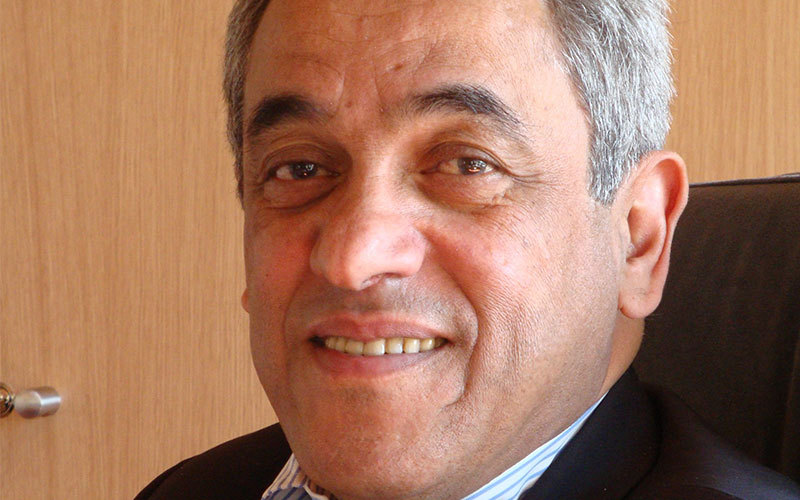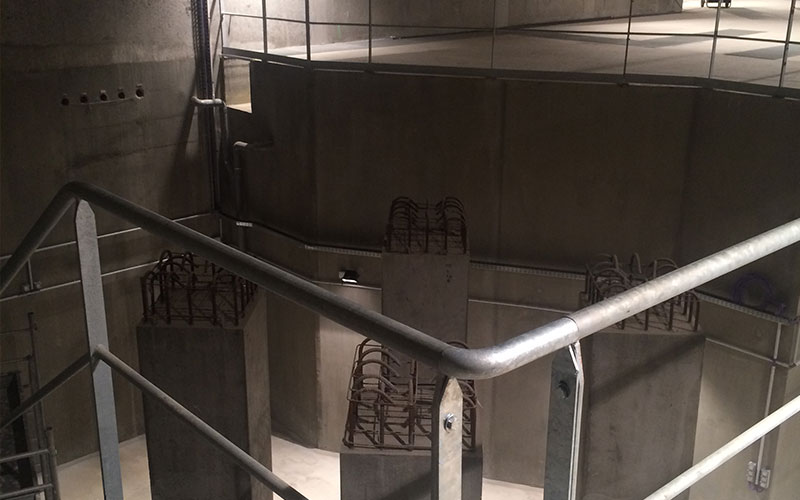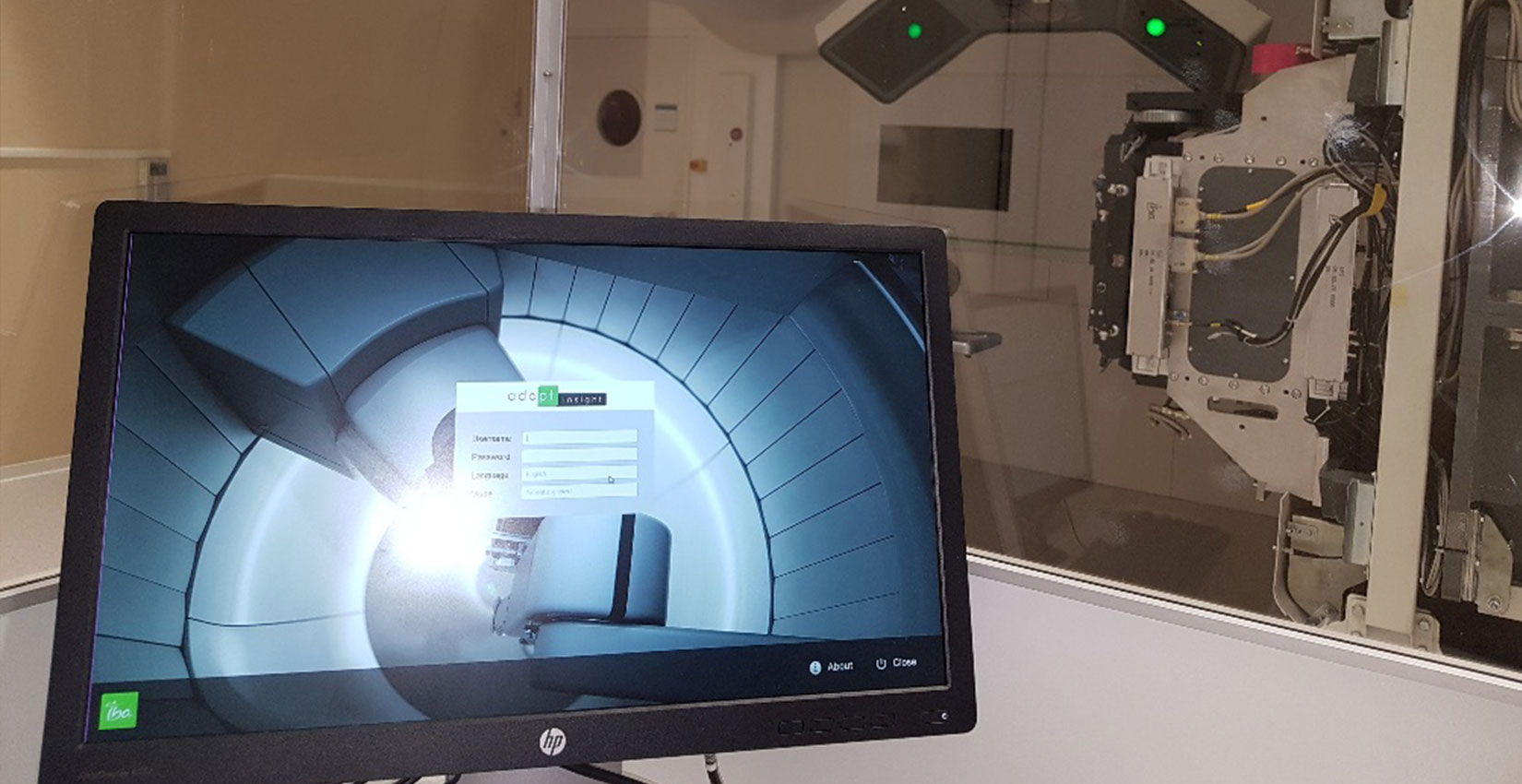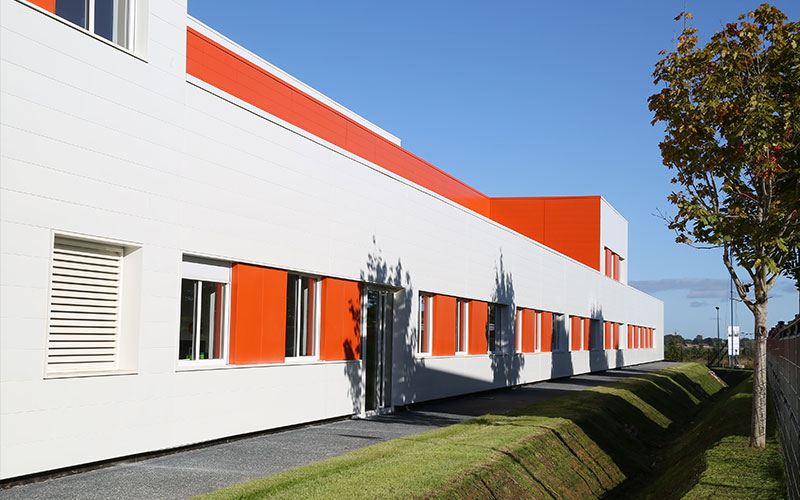The building housing the Centre Européen de Recherche et de Traitement en Hadronthérapie (European Centre for Hadrontherapy Research and Treatment), along with Proteus®ONE – new tumour-treating equipment using protontherapy – was inaugurated in July 2018 in the city of Caen. Meet Professor Khaled Meflah, President of ARCHADE (the Advanced Resource Center for HADrontherapy in Europe), the cancer research programme being led from Normandy.

How did the ARCHADE project come into being ?
The ARCHADE project is relatively well established, as it started up some 15 years ago. This hadrontherapy project was supported at the outset by the Conseil Régional de Basse-Normandie (Western Normandy’s regional council), wishing to make this project a top priority. At that time, two such projects were established at national level, our one in Normandy and the Etoile project, developed by the Rhône-Alpes Region. The French State chose to continue supporting the latter at national level, while Basse-Normandie wished to continue developing hadrontherapy itself. Our project centred around the famed Cyclotron, the C400, a machine to be built in Basse-Normandie, with the idea that it should subsequently be made commercially viable. The Rhône-Alpes project came to a halt for a whole variety of reasons, so the project developed here was the only one left going in France, with the continued, extremely significant support of the Normandy Region. Our project notably focused on putting together a new machine to develop hadrontherapy, in particular carbontherapy, that’s to say using carbon ion beams.
What are the main differences between radiotherapy, carbontherapy, hadrontherapy and protontherapy?
Radiotherapy is the most commonly used treatment, using X-rays. It’s employed across the world. Then there’s protontherapy, which is radiotherapy using proton beams. In France, up until recently there were just two centres for this, one in Nice, one in Paris. Now, there’s a third, the CYCLHAD Centre in Caen, inaugurated in July 2018, along with Proteus®ONE, the new associated machinery. This last is just one element in the ARCHADE project. It wasn’t the top priority, but has constituted a first stage, before developing the other radiotherapy – carbontherapy. In this case, neither X-rays nor protons are used, but carbon ion beams instead.
Why develop new forms of treatment ?
Even if enormous progress has been made in the field, X-rays, the most conventional form of treatment, have disadvantages, notably causing secondary effects that can have long-term negative consequences. Using X-rays, you can cure a cancer, but the risk remains of developing a second cancer many years later, linked to radiation exposure. In adults, that may be the lesser of two evils, but in children, it proves much more problematic.
What are the advantages of protontherapy ?
Protontherapy improves matters, reducing very significantly the risk of a second cancer linked to treatment. For young children, using proton radiotherapy, the risk of a second cancer cropping up 20 to 30 years later is considerably reduced, plus the treatment is more effective.

What about carbontherapy ?
Carbontherapy offers the same advantages as protontherapy in terms of reducing the risks of a second cancer, and it is more effective in terms of eliminating a tumour. It is much more effective than protons. When you have tumours that are resistant, or radio-resistant, they become more sensitive to treatment with the use of carbon, which also enables an extremely high degree of precision.
In what ways is it innovative ?
The innovative nature of the ARCHADE project is that it’s proposing carbontherapy using machinery that, although it doesn’t exist as yet [at time of writing], will be latest generation and much more compact than the existing machinery being used in Japan and Germany. In those countries, the machines have a perimeter measuring many tens of metres and are housed in large buildings where only a few patients can be treated. Now, with the Cyclotron C400, the equipment being developed in Caen, we’ll have a machine measuring c.6m in diameter by 2.5m in height. It’ll enable us, among other things, to use and explore further particles beyond carbon particles, which is both very interesting and unique at the medical-scientific level.
How is the ARCHADE project set up ?
This machine, the Cyclotron 400, is being developed by the company Normandy Hadrontherapy. To set up the project, it’s been necessary to put in place several partnerships. The project therefore concerns several entities, all cooperating in developing this C400. So, we have: the CYCLHAD Centre, presided over and managed by Philippe Lagalle, that acquired the Proteus®ONE, a new piece of equipment for treating tumours using protontherapy, inaugurated in July 2018; and the Centre François Baclesse, which requested authorisation for protontherapy treatment and will treat patients with this machine, in the Centre’s buildings. But, beyond the development of machines, the CYCLHAD Centre’s vocation is also to develop research, with the capacity to welcome research teams from across the entire world who’ll be able to use the place and come and use the carbon beams in particular to advance research in the field of hadrontherapy.

How are Normandy and Caen in particular so well placed to be able to offer such innovations ?
All this has been made possible thanks to the ecosystem that has been developed here, which, in my view, means this counts as an exceptional site at international level. Here, we have: GANIL, for everything concerning issues of beams; CYCERON, for everything concerning imaging; LPC/ENSI Caen, for everything concerning issues of dosages [i.e. the measuring of radioactive doses]; and, of course, the Centre François Baclesse, where the radiotherapists are based. This last Centre has the best-performing machines in terms of conventional radiotherapy, that’s to say using X-rays. Protontherapy patients are looked after in the CYCLHAD building where the Proteus®ONE is housed. The doctors capable of administering the treatments, the physicists capable of controlling the dosage issues, the CYCERON Centre for imaging and of course Ganil, with all its expertise in the field of beams – all these combined form an exceptional campus unmatched in France.

Worth knowing :
- The ARCHADE programme is part of a concentrated area of scientific and medical centres all set within a permiter measuring less than one kilometre in the north of Caen and including: the Caen CHU (Centre Hospitalier Universitaire, or University Hospital); the Centre François Baclesse; the LPC (Laboratoire de Physique Corpusculaire) /ENSI Caen; GANIL (Grand Accélérateur National d’Ions Lourd, or National Large Heavy Ion Accelerator); the CYCERON Centre (Centre d’Imagerie Biomédicale, for biomedical imagery); the CYCLHAD Centre…
- The first phase of the ARCHADE programme, brought to fruition by the CYCLHAD company and consisting in the acquisition of the Proteus®ONE machine and the construction of the building to house the research and treatment centre, has cost €76.5 million. The research teams have a surface area of 800m2 in which to carry out their work.
- Private investors, IBA, SEM SAPHYN and a pool of banks, participated in the financing of this first phase. The Normandy Region has supported the Centre, via its participation in SEM SAPHYN, to the tune of €22 million, as well as via a first loan guarantee to the tune of €37 million.
- Hadrontherapy is an innovative technique in combating cancer. It makes it possible to destroy radioresistant, inoperable cancer cells by radiating them with a beam of particles. Conventional radiotherapy essentially uses X-rays, whereas hadrontherapy uses beams of hadrons, notably protons (in which case, it’s protontherapy) and carbon ions (in which case, it’s carbontherapy). (Source: France Hadron).
- Following the creation of the Cyclhad Centre and the acquisition of the Proteus®ONE machine inaugurated in July 2018, the Centre François Baclesse radiotherapy service is capable of treating, according to present agreements, over 300 patients.
